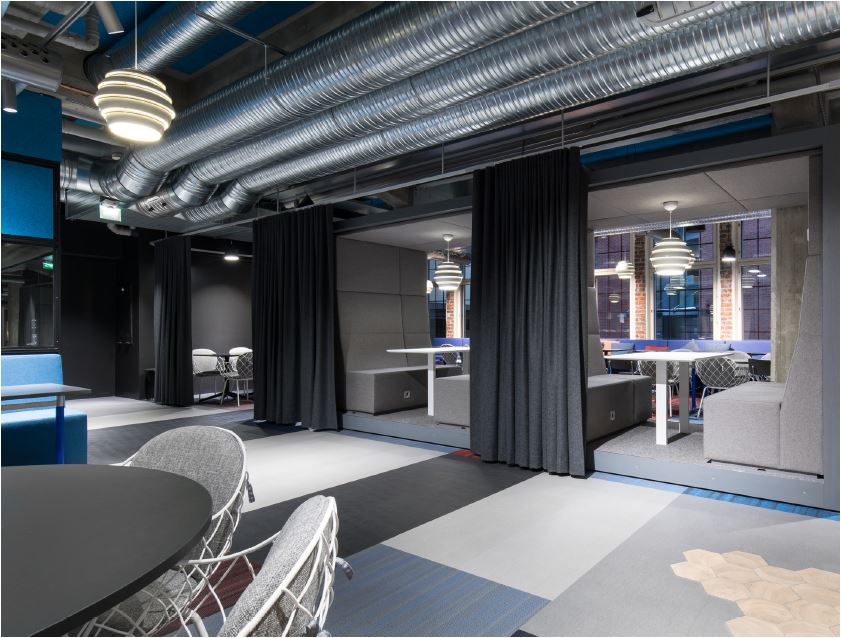New Study Highlights Shifting Workplace Trends
IFMA's 'The Once Alternative Workplace Strategies' study has been released by Advanced Workplace Associates (AWA), Global Workplace Analytics and Haworth Inc....
Read Full Article
One in five new or refurbished workplaces fails to meet employee needs according to the latest report from Leesman - suggesting vast amounts of money are being spent to gain poor ROI.
The report investigates the success rate of workplace change projects while unearthing the factors behind why many fail.
Entitled ‘The Workplace Experience Revolution Part 2: Do new workplaces work’ is the culmination of Leesman’s nine-year analysis across 557,959 employee responses in 3,932 workplaces worldwide.
The first part of the study, published in 2018, unearthed a series of mission-critical ‘super drivers’ that provide the foundations for outstanding employee workplace experience. Part 2 takes this investigation further by exploring the challenges and stresses that organisations encounter when it comes to delivering employee experience in a new workplace.
The findings from the latest research are drawn from 346 spaces that have been measured by Leesman specifically in the post-occupancy phase after a workplace relocation or refurbishment. This group, which comprises 84,158 individual employee responses, provided Leesman with an opportunity to investigate where workplace change projects succeed or fail at a scale never before undertaken.
McKinsey & Company
Leesman’s data challenges McKinsey & Company’s often-cited statistic that ‘70% of change management projects fail’. While 41% of new workplaces deliver an exceptional employee experience (with a Leesman Index effectiveness score (Lmi) of 70 or above), 40% have not maximised their full potential (scoring between 60-60.9) and 19% are failing their occupants (recording an Lmi below 60).
Working productively
The Workplace Experience Revolution Part 2 reveals that 66.5% of respondents in new workplaces agree that their workplace enables them to work productively. Viewed in reverse, however, this means that one in three respondents cannot agree that their new workplace allows them to be productive.
Collaborative and concentrative working
Workplace change projects generally succeed in collaborative areas such as bringing people together and supporting interaction. ‘Planned meetings’ scores 87, ‘informal social interaction’ scores 84.4, and ‘accessibility to colleagues’ scores 72.3.
New workplaces, however, notably fall short when it comes to supporting individual and concentrative tasks. Employees’ satisfaction with ‘private conversations’ in the new workplaces only manages to achieve an Lmi of 59. Meanwhile, satisfaction with ‘noise levels’ delivers the most damning results, with a score of just 33.4 on the Leesman Index across new workspaces.
Flexible or designated seating
The data suggests that neither flexible nor designated workspace will guarantee a successful change project. It’s all about providing employees with the right environment for the right activities. Employees with less complex roles, for example, report less improvement following workplace change projects compared to their peers with more complex roles.
Variety
Leesman’s report highlights that a growing number of organisations understand the variation in their employees’ work tasks and are building more variety into their workplaces as a result. The data suggests, however, that organisations risk incorporating more variety at the detriment of those who primarily do individual desk-based work.
Hinder rather than help
Tim Oldman, Leesman CEO, said: “The data unveiled in part two of our report should concern business leaders. The results are indicative of a workplace industry that is all too ready to jump on the latest industry trends without a proper understanding of what their employees do and need in their workplaces.
“A workplace change project provides organisations with an opportunity to re-imagine their employees’ experience at work in a way that can ignite individual and organisational performance. But success hinges on supporting what employees are doing and how they are doing it. If leadership teams fail to recognise the needs of their people, they risk delivering workplace changes that hinder rather than help employee experience.”
Picture: Pod Rooms by Into The Nordic Silence - taken with kind permission from the Nespresso Professional and The Future Laboratory’s Workplace Futures report.
Article written by Cathryn Ellis | Published 04 October 2019
IFMA's 'The Once Alternative Workplace Strategies' study has been released by Advanced Workplace Associates (AWA), Global Workplace Analytics and Haworth Inc....
Read Full ArticleA new survey shows that UK employees estimate they lose 68 minutes every week to “unproductive workplace tasks”, including navigating workplace procedures and...
Read Full ArticleTwo workplace technology businesses have combined to create a software solutions brand with over 16.3 million users and a customer base spanning more than 16,000 global...
Read Full ArticleCitigroup has announced plans to open a new office hub in Málaga, offering a working alternative for employees in comparison to the likes of London and New York...
Read Full ArticleHqO have collaborated with Verdantix for their most recent in depth report on the evolving global landscape of commercial real estate, with both the views of property...
Read Full ArticleOne-in-five UK workers now have their work instant messaging app on their personal mobile phone, according to new research from by B2B furniture e-commerce...
Read Full ArticleGallup’s latest State of the Global Workplace report finds that the UK and Western Europe have the lowest employee engagement levels globally at just...
Read Full ArticleA new set of innovative digital tools and resources has now been launched to support and guide employers to maximise the benefits to their business and...
Read Full ArticleLeesman has released details on what they consider to be the “acute factors” impacting employees’ ability to work remotely. A major study...
Read Full ArticleJanuary can be a tough month under normal circumstances, so how can organisations support their employees during this latest national lockdown? As of today (Tuesday 5...
Read Full Article